Treasure Island: the jewellers bringing African designs to London
The UK capital shimmers with precious stones, single-origin gold
and ancient jewellery techniques from the African continent
All jewellery images: photography by Aaron Tilley / set design by Sandy Suffield
London is a jewellery lover’s heaven. Here, thousands of years of jaw-dropping design can be discovered within a 10-minute walk. You can admire glittering stones telling stories of European monarchs at the V&A museum, before fawning over high fashion’s ostentatious creations at iconic department store Harrods.
On New Bond Street, in luxury shopping hub Mayfair, legendary French brands Cartier and Van Cleef & Arpels vie for attention with British jewellers Graff, David Morris and Boodles. Meanwhile, smaller boutiques have filled the nearby Burlington Arcade since the early 19th century. Enticing buyers with antique and avant-garde gems, the shops are watched over by a private troupe of Beadles, dressed in silver-trimmed capes and hats.
Alongside upholding glam jewellery traditions, London embraces innovation, whether via championing homegrown designers like Shaun Leane or nurturing talent from students of Central Saint Martins and the Royal College of Art.
And increasingly, the UK capital is becoming a global centre for jewellery created by designers of African and Black heritage. In 2022, Sotheby’s auction house chose London as the setting for its second Brilliant & Black selling exhibition of work by Black jewellery designers. It followed a smaller first edition in New York that curator Melanie Grant described as a “global platform for Black jewellers to celebrate this new renaissance of African infused design”.
There is also a growing recognition that many natural materials used in jewellery are of African provenance. In the past, these resources were exploited for financial gain outside the continent – an imbalance some jewellers, based in London, but with a strong African backbone, are starting to address. We talked to three such jewellers to find out more.
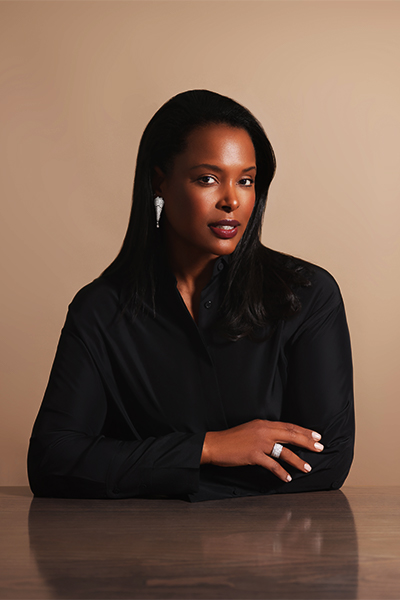
Vanleles designer Vania Leles / Image: Igor Fain
Jeweller Vania Leles stumbled upon the world of fine jewellery when working as a model in New York in the early 2000s. Born and raised in Guinea-Bissau, Leles was ‘mesmerised’ by the jewellery from top brands she saw at a photoshoot one day. Her course was set when she realised that the beautiful materials from which these magnificent pieces were made came from her home continent.
The lack of widespread acknowledgement of where those Zambian emeralds and Mozambican rubies are sourced prompted Leles’ career change. She moved to London to live with her mother, studied gemmology, gained industry experience at diamond specialists Graff and De Beers, and worked at Sotheby’s auction house. Through her emerging bold designs, the ex-model set out to launch a company with a strong African heritage that would “honour the countries and communities where the gemstones come from”.
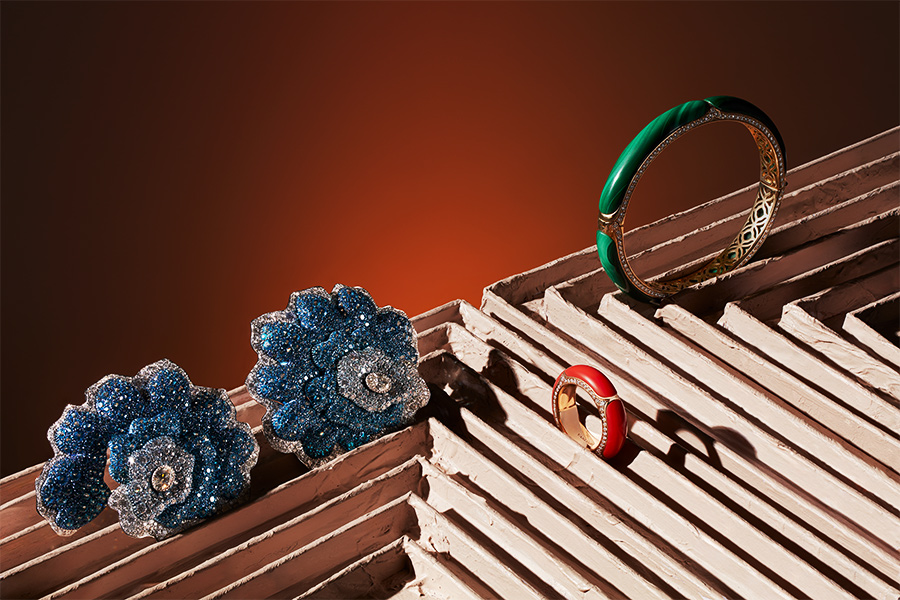
Items from Vanleles’ Enchanted Garden and Nile collections

Vanleles was founded in 2012, with a mission to make “African-inspired, contemporary works of art” for global women. Singer Rihanna has worn white gold, diamond and sapphire earrings from the Enchanted Garden collection, inspired by the asymmetrical floral pattern on a West African batik print fabric that Leles’ mother bought in Senegal. The Princess of Wales, Kate Middleton, was photographed in bespoke Vanleles bee earrings.
Leles, who sources conflict-free diamonds from Namibia, Botswana and South Africa, draws on her childhood memories and travels as inspiration for her Legends of Africa, Out of Africa and Nile collections. Her brand’s home, however, is London, and her showroom attracts an elite international clientele to Mayfair – Vanleles also featured in the Brilliant & Black exhibition. “I needed to be in a place like London to have that impact to represent Africa with flying colours on the global stage,” she says.
vanleles.com
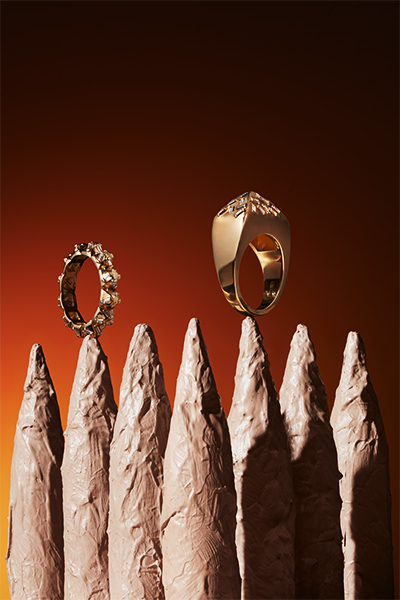
Malian collection from Aymer Maria
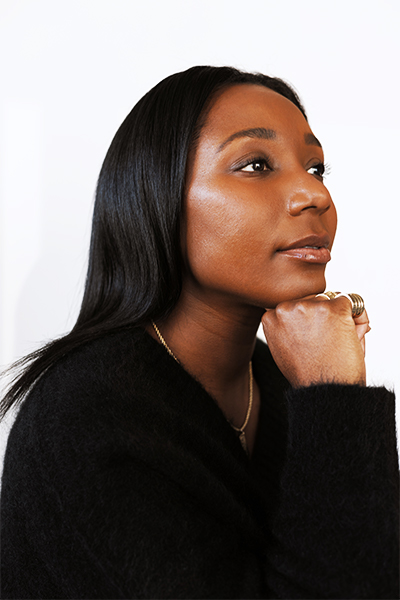
Jewellery designer Ruth Aymer
Jeweller Ruth Aymer’s Malian Collection summarises her ultimate design inspiration: Mali’s “absolutely breathtaking” Great Mosque of Djenné. The world’s largest mud-brick structure, lauded as a leading example of Sudano-Sahelian architecture, is echoed in her rings’ and earrings’ baguette diamonds that jut out from their fine gold setting. The pyramid-shaped towers of the Larabanga Mosque in Ghana also influence the pieces’ stunning sculptural look.
Long “obsessed with symmetry”, Aymer’s lifelong interest in architecture – nurtured by growing up in London – infuses all her jewellery designs. It’s combined with a desire to reflect West African culture, as Aymer’s father hails from Sierra Leone. “Although raised in London, I have a strong sense of African pride,” says Aymer, who visited Sierra Leone for the first time last year.
“There’s more visibility of Black jewellery designers in London”
Aymer employs craftspeople to handmake her pieces, mostly in London’s historic Hatton Garden jewellery quarter. Her Malian Collection uses Botswanamark diamonds, which are meticulously tracked back to their source, and recycled gold – but Aymer says that the next step will be to transition to Single Mine Origin (SMO) gold.
A former estate agent, Aymer is new to the world of jewellery, having launched Aymer Maria in 2021. But her brand is already stocked by Liberty, the high-end department store in London’s West End. “There’s more visibility of Black jewellery designers in London, which is really exciting,” says Aymer.
aymermaria.com
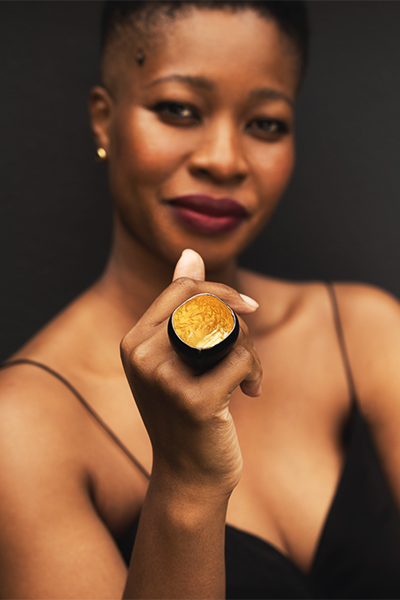
Jeweller Emefa Cole / Image: Casey Moore
Ghanaian-British actor Michaela Coel caused a stir when she attended this year’s Met Gala in New York dripping in statement gold. The hair brooch, earrings and two rings she wore to the Big Apple’s glamorous fashion ball are from Emefa Cole’s Worth Its Weight collection, which is designed to provoke discussion about provenance and traceability of the precious metal.
The SMO gold in the collection’s solid pieces, which include a pair of moulded cuffs, can be tracked right back to its source: the Ity mine in Ivory Coast, which borders Ghana’s Bono region, where Cole was born. She moved to the UK aged 12. “Knowing exactly where the gold comes from, who mined it and what is happening within those communities is so important to me,” says Cole.
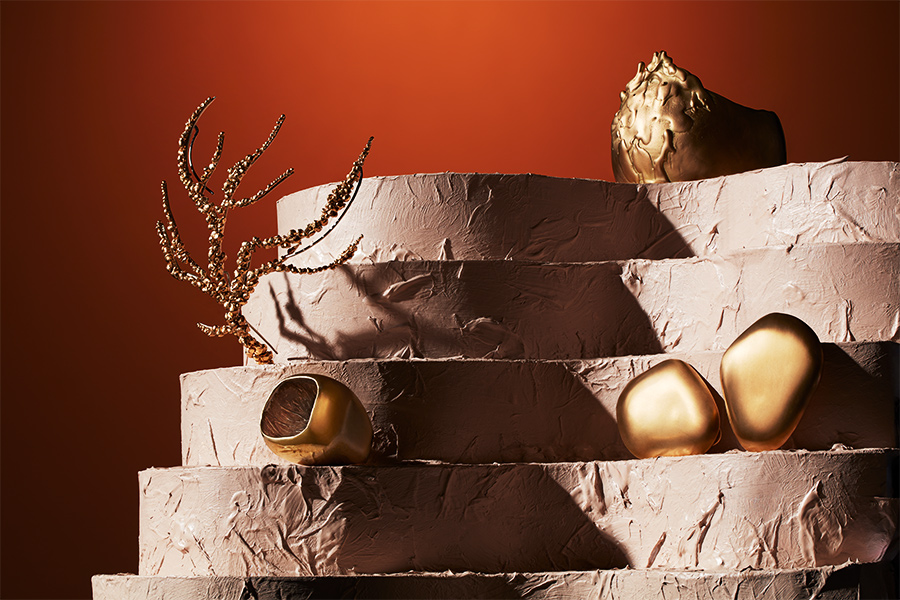
Emefa Cole’s Worth Its Weight collection

As well as championing responsible sourcing, Cole has been appointed the V&A museum’s first curator of diaspora jewellery. British Vogue has named her among Britain’s 25 most influential women this year.
Cole is also learning the ancient technique of Ashante lost-wax casting from southern Ghana. She carves a design from beeswax, creates a clay and charcoal mould, burns out the wax and then fills the void with molten metal.
Cole uses this learning to inspire her own techniques at her bench in London, which she calls an exciting place to work in jewellery. “We’re in a time that will be very significant in the future,” she says. “When people look back at this era, they’ll see really good makers working alongside one another in London.”
emefacole.com
Get to know the UK’s capital city in a flash with our super-quick guide to London.